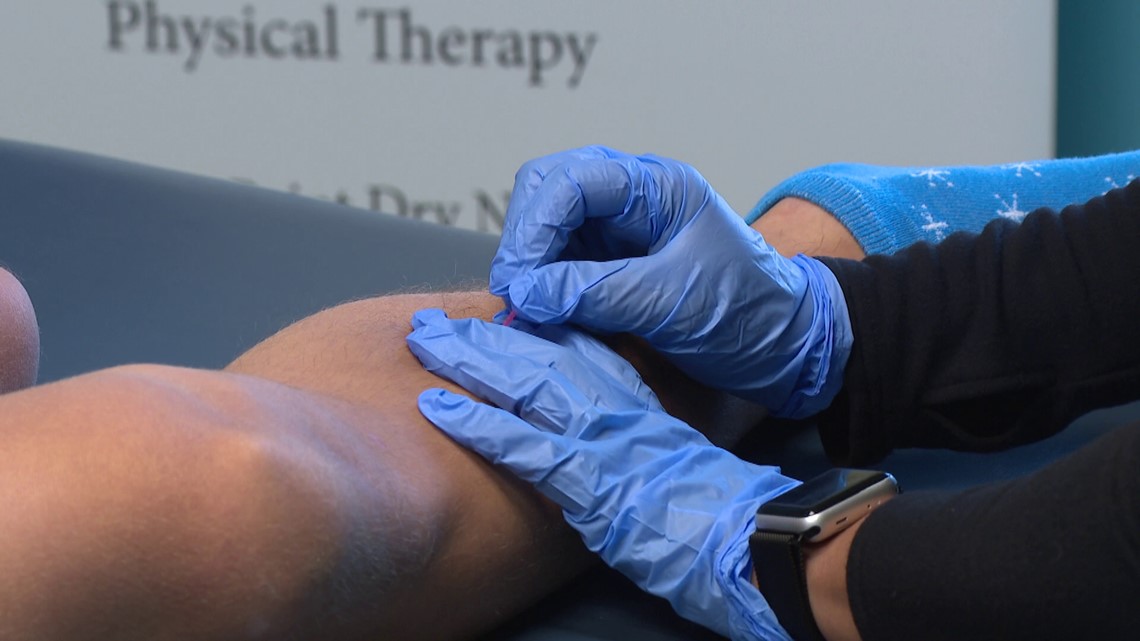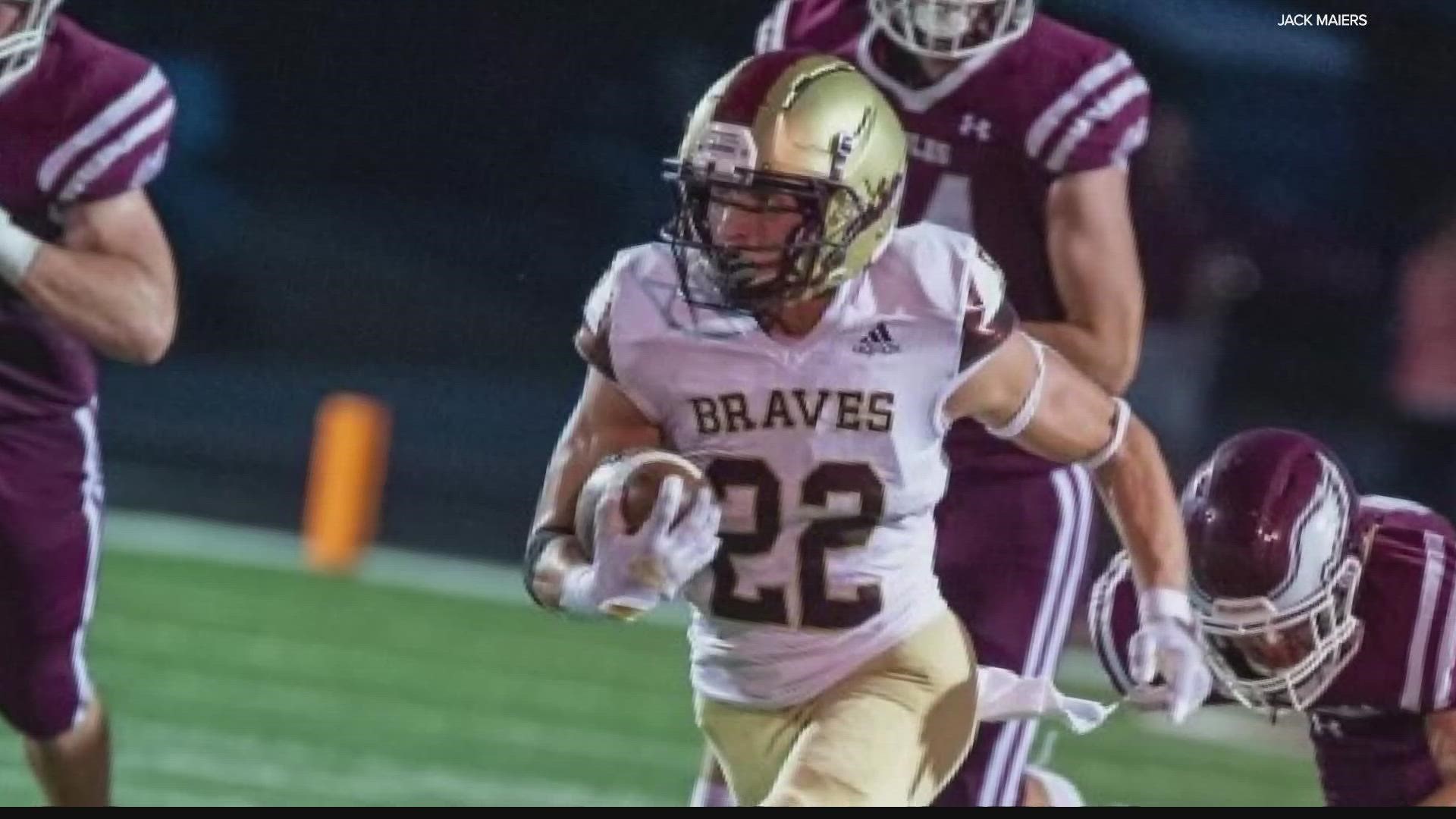INDIANAPOLIS — After months of chronic shin splints, Jack Maiers, a junior at Brebeuf Jesuit Preparatory School, started looking for alternative treatments.
He plays football and lacrosse, but the pain was so intense it kept him sidelined.
"It basically felt like I was running on a bone that had been hit with a hammer all the way down," Maiers said.
Maiers tried cupping and stretching, but said only long periods of rest seemed to provide relief. However, when he got back to practice, the pain returned.
“My athletic trainer at school said maybe give dry needling a shot,” Maiers said.
He went to see Divya Narayahan, a doctor in Physical Therapy at One 2 One Physical Therapy in Carmel.
Narayahan said she added the western practice of dry needling to her repertoire in an effort to provide patients with a treatment that provides more immediate relief. During treatment, she inserts tiny needles directly into muscle trigger points.
"We are going directly into the muscle fibers and resetting that muscle spindle to release the knots and muscles. Sometimes, people will have radiating pain down the hand, the arm, or the leg and it’s just the trigger points that are irritating that nerve root and it's not necessarily coming from the spine. I use it for neck, back and, with athletes, shin splints, plantar fasciitis, rotator cuff, and shoulder pain, anywhere there is a muscle that can develop trigger points that create dysfunction. This gets them back on the field quickly.” Narayhan said.


Dry needling targets areas of acute pain and differs from acupuncture. During the Eastern practice of acupuncture, needles are inserted along meridian lines that represent the body’s organs. During acupuncture, needles are placed for up to 30 minutes with the goal of restoring energy to the body and treating a wide variety of ailments.
The One 2 One dry needling sessions cost $120 and are typically not covered by insurance. There is a package rate discount.
"I didn't think it was going to work as well...the fact that I could do something in the season for 10 minutes one day of the week and be fine for a week to my next session was almost inconceivable to me," Jack said. "The needles aren't very big and the only uncomfortable part is it does feel like you're getting a little bit of a cramp when the needle goes in."


After needling, Narayahan uses a laser on the area to minimize swelling.
"I feel like I really, really help people get back to doing things that they want to do. Like they're often stuck in like, 'I've tried this, I've tried that' or you know, and nothing is helping. So that's usually when people come to me because I'm like the last resort sometimes," Narayahan said.
Narayahan said most patients see immediate relief and don't need to return for treatment. Athletes, however, often require routine appointments because they repeatedly irritate the muscles during practice and training.
The treatment allows Jack to get back on the field and pursue his passion.
"What makes me a Best Me is being able to do the things that I love and do them well. Whether that's being with my family or friends, but especially being productive in my sports and being able to perform at a high level. I think that makes me the best me," Maiers said.

